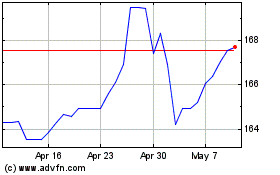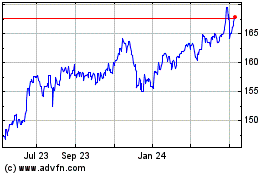Euro Drops Against Most Majors
March 06 2015 - 5:26AM
RTTF2
The euro weakened against the other major currencies in the
early European session on Friday, as the yields on bonds issued by
Portugal, Italy and Spain sank after European Central Bank detailed
its massive quantitative easing program set to start next week.
Yields on 10-year bonds issued by Portugal, Italy and Spain fell
to record lows. The benchmark 10-year yields of Portugal, Italy and
Span was around 1.76 percent, 1.27 percent and 1.19 percent
respectively.
ECB President Mario Draghi revealed on Thursday that the bank
will purchase $66.3 billion worth of bonds each month beginning on
March 9 and expects the impact from it stimulus measures to return
inflation to the euro area next year. The central bank previously
indicated that the $1.1 trillion asset purchase program is expected
to continue until September of 2016.
At its monetary policy meeting, the ECB maintained its interest
rates unchanged for a fifth consecutive session. The ECB also
raised its forecast for European economic growth in 2015 to 1.5
percent from 1 percent.
Traders await the U.S. Labor Department's jobs data for February
to be released shortly. Economists expect the job growth to fall to
240, 000 in February from 257,000 in January, while the
unemployment rate is forecasted to drop 5.6 percent from 5.7
percent.
In the early European trading, the euro fell to more than a
11-year low of against the U.S. dollar, from an early high of
1.1239. On the downside, 1.03 is seen as the next support level for
the euro.
Against the pound, the euro slipped to 0.7211 for the first time
since December 2007. This may be compared to an early high of
0.7238. The euro is likely to find support around the 0.71
area.
The euro dropped to near 1-1/2-month lows of 131.72 against the
yen and 1.4063 against the Australian dollar, from early highs of
132.54 and 1.4179, respectively. If the euro extends its downtrend,
it is likely to find support around 130.11 against the yen and 1.37
against the aussie.
Against the Canadian dollar, the euro fell to 1.3688 for the
first time since September 2013 from an early high of 1.3776. The
euro may test support near the 1.35 region.
Looking ahead, U.S. jobs data for February, trade balance and
consumer credit - both for January and Canada trade data for
January are set to be published in the New York session.
At 1:30 pm ET, U.S. Federal Reserve Bank of Dallas President
Richard Fisher will deliver a speech on "State of the Economy and
Farewell, Dallas" before a Dallas Regional Chamber luncheon.
Euro vs Yen (FX:EURJPY)
Forex Chart
From Mar 2024 to Apr 2024

Euro vs Yen (FX:EURJPY)
Forex Chart
From Apr 2023 to Apr 2024
